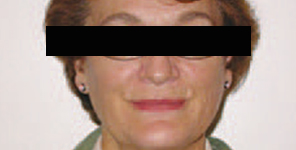Sleep Disorders

2. Sleep Apnea
3. Narcolepsy
4. Circadian Rhythm Sleep Disorders
5. Insomnia
6. Night terrors
7. Nightmares
8. Sleep walking
9. Sleep talking
10. Bedwetting
11. Sleep related movement disorders
12. Excessive Daytime Sleepiness disorders
OMT
HELPS

OMT may be an aid to assisting Sleep Medicine Physicians and Sleep Dentists attain a patent air- way and educating patients as to the value of ex- ercising muscles of the stomatognathic system. We can also reinforce the sleep physician or den- tist’s treatment plan and motivate the patient to continue treatment.
IF NOT
TREATED

Patient’s condition may worsen especially if they ignore the physician or dentist’s treatment plan. Sleep disorders are linked to malocclusion, TMD, and even death, in severe cases, obesity digestive problems and diabetes, worsening of periodontal disease, behavioral problems and learning delays in children, accidents and injuries.

15. Sleep Disordered Breathing (SDB) and Obstructive Sleep Apnea (OSA)
–Bonuck KA, Chervin RD, Cole TJ, et al. Prevalence and persistence of sleep dis-ordered breathing symptoms in young children: a 6-year population-based cohort study. Sleep. 2011. 34(7):875–884.
–Gozal D. Sleep-disordered breathing and school performance in children. Pediatrics; 1998. 102:616– 620 –Guilleminault C, Huang YS, Monteyrol PJ, Sato R, Quo S, Lin CH. Critical Role of Myofacial Reeducation in Pediatric Sleep-disordered-breathing. Sleep Med. 2013. Jun;14(6):518-25. Epub 2013 Mar 21.
–Guimaraes KC, Drager LF, Genta PR, et al. E ects of oropharyngeal exercises on patients with moderate obstructive sleep apnea syndrome. Am J Respir Crit Care Med 2009;179(10):962–6. http://dx.doi. org/10.1164/rccm.200806- 981OC.
–Coceani L. Oral structures and sleep disorders: a literature review. International Journal of Orofacial Myology, 2003. 29:15-28.